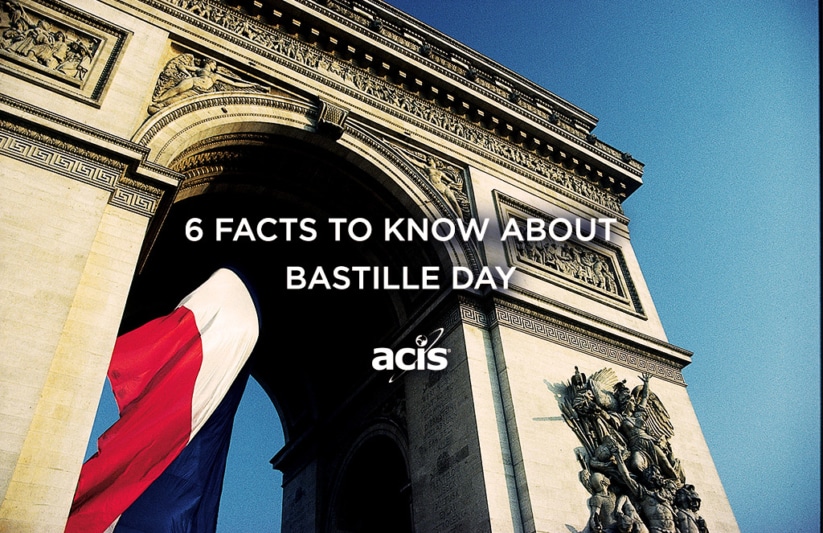6 Facts to Know About Bastille Day

Susan Braun taught public school in Indiana for eight years before taking a break to raise her own children. She was awarded a Lilly Endowment Teacher Creativity Fellowship and a National Endowment for the Humanities Summer Study Scholarship, and used both to study European royalty while visiting sites in Germany and England. She’s the author of “Not So Happily Ever After: The Tale of KingLudwig II” and also wrote 6 lesson plans on Queen Isabella of Spain!
July 14: Bastille Day. You probably know that it’s France’s national holiday, but what is it really all about? Here are 6 interesting facts that you may not know about this red, white and blue celebration!
The French Don’t Call it Bastille Day
“Bastille Day” is an American moniker. The French aren’t fans of over-emphasizing the Bastille itself. When an angry mob stormed the Bastille fortress back in 1789, hoping to topple the corrupt monarchy, hundreds were killed or wounded. The current holiday honors the French Republic that was formed one year after that event. To the French, what we call Bastille Day is known as La Fête Nationale, or Le Quatorze Juillet.
The Bastille was a Prison
Okay, so the French aren’t overly fond of the Bastille itself. The Bastille was a fortress: a state-run prison that became the symbol of the power-hungry French monarchs of the 18th century. The Bastille featured 100-foot-high walls and eight towers, and was surrounded by a moat. On July 14, 1789, only seven prisoners were confined in the Bastille. Its capture set the stage for King Louis XVI and his wife, Marie Antoinette, to eventually face the guillotine for treason in 1793.
Don’t put the Bastille on your must-see list when you visit Paris. It’s totally gone; every brick dismantled by French revolutionaries back in the 1700s.
Bastille Day is a Joyous Celebration
Despite its grim history, Bastille Day is a joyous celebration in France. French TV broadcasts the annual Parisian military parade (the largest of its kind in Europe), which proceeds down the Champs Elysees with the French President in attendance.
All of France celebrates, although the largest events happen in Paris. The celebration isn’t confined to July 14 either; Fireman’s Balls are sponsored by fire stations in various neighborhoods to benefit charities. Parisians celebrate with food, drink, fireworks, and music. One of the best places to join in the festivities is – no surprise here — Place de la Bastille, site of the former Bastille fortress. The famous Louvre art museum offers free admission on this day, so you can bask in the glory of Mona Lisa as you celebrate.
There are US Celebrations of Bastille Day
France’s demands for a government “of the people” has similarities to our American history, so it’s probably not surprising that over 150 Bastille Day celebrations happen in the United States each year. New Orleans, St. Louis, Milwaukee, Seattle, Philadelphia, and New York City host the largest, but you’ll find festivities in many places were French immigrants settled. The Milwaukee celebration even features a 43-foot Eiffel Tower replica!
Several Dates Were Considered for France’s National Holiday
July 14 wasn’t a shoo-in choice for the national French holiday. An 1880 vote in the French senate decided on the date after intense debate. Some statesmen felt that the date of the storming of the Bastille was too bloody to merit celebrating. Other dates considered were September 21 (the date the French Republic was created) and February 24 (the date France’s Second Republic was founded). But July 14 eventually won out. As Senator Henri Martell said, July 14, 1790 was “the most beautiful day in the history of France, possibly in the history of mankind. It was on that day that national unity was finally accomplished.”
The US has a Key to the Bastille
Nineteen-year-old French Marquis de Lafayette arrived in the US to fight for freedom in 1777. He became good friends with George Washington, and was like a son to the first US President (Lafayette later named his own son Georges Washington de Lafayette). After returning to his homeland, Lafayette became Commander of the Paris National Guard and was given a key to the Bastille in the aftermath of its siege. The Marquis sent the key to Washington in honor of their friendship, and today you can view it in Washington’s Mount Vernon estate.
Discover School Trips to France










